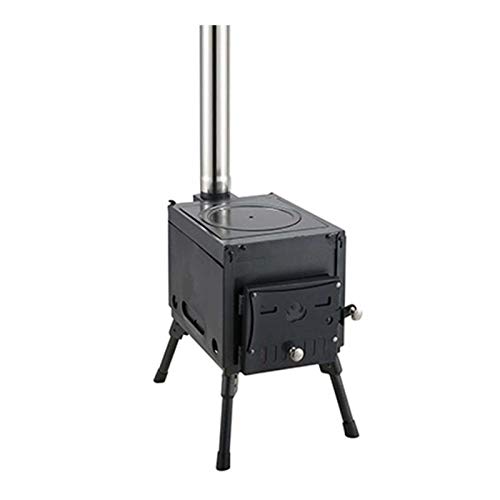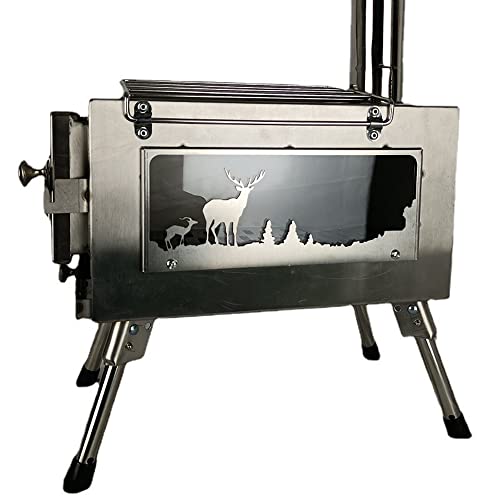Woodburning Stove Tips From The Top In The Industry
페이지 정보

본문
How to Properly Operate a Woodburning Stove
Wood stoves are an inexpensive and cozy way to heat your home. However, the smoke they produce can also be harmful to health. It is essential to know how these appliances work and to operate them properly.
Many modern stoves rely on a catalytic or secondary combustion to limit their emissions. Older stoves and open flames emit high levels of particulates.
The firebox
The firebox is the heart of any fireplace system. It's where you create a fire to heat your home and provide ambiance. It's a simple concept, but there are many important details that must be accounted for to keep your small wood burners for sale burning stove safe and efficient.
The simplest way to think of the firebox is to think of it as a box-like combustion chamber with walls and a door. Most fireplaces come with prefabricated metal fireboxes or masonry firebox. The kind of firebox you select will depend on your preferences as well as the kind of fireplace you have.
Most fireplaces with wood burning use a constant air flow to start the fire and burn fuel. Fresh air is drawn into the stove through the adjustable dampers in the stove's doors. This lets the fuel burn efficiently and helps reduce the toxic gases caused by unburnt or incomplete combustion. The exhaust gases will then be drawn up the chimney and safely away from your home.
Modern stoves that have catalytic second combustion make use of a specific catalyst that allows unburned gases to be reburned to produce additional warmth. This results in more clean and less polluting smoke than traditional wood stoves that do not have secondary combustion. Modern non-catalytic stoves are available, but they're generally less efficient than stoves that have secondary combustion catalytically.
Some wood-burning stoves have backboilers that are used to heat water as well as for space heating. They are also known as "combination" or "hybrid" stoves and have been around since the beginning of the 20th century.
Wood burning stoves should only be burned with well-seasoned outdoor wood burning stove. Freshly cut wood (green) has an excessive amount of water. This could lead to low flue temperatures and an excessive accumulation of creosote in the chimney. This can lead to chimney fires that destroy the stove, and can even be dangerous to your family's health.
If you're looking for a professional to inspect your wood-burning stove, or make any firebox repairs, make sure the chimney professional you choose is CSIA certified and offers reviews from their customers on their website. It's also important to ask about their rates and what is the type of work they can do.
The ventilation pipe
Ventilation is essential for wood stoves in order to remove fumes and keep the home healthy and warm. Venting helps eliminate carbon monoxide, nitrogen dioxide and excess moisture from the process of combustion. It also helps reduce air pollution and heat loss outside. Wood, gas and pellet stoves all have distinct requirements for venting. Maintaining the stove's ventilation system annually is critical for safety and efficiency.
The ventilation system consists of the firebox and the vent pipe. The chimney and the ventilation pipe work together to create draft that draws smoke from the stove through the fireplace. The difference in densities and temperature between the hot wood smoke and the cold outside air creates draft. The higher the temperature, more smoke can rise through the pipe of ventilation and chimney.
The majority of modern wood stoves are certified as low-emission units by EPA. They produce less pollution than older models, which contribute to global warming and other environmental problems. Most newer stoves also come with pollution controls built-in to reduce the amount of carbon dioxide they release while ensuring the emissions are burned in an efficient manner.
Older stoves with open flues produce lots of carbon dioxide, an extremely poisonous gas and should not be allowed to escape into your home. Carbon monoxide can be a source when your chimney is dirty or has inadequate ventilation. Installing carbon monoxide alarms inside your house is therefore important.
Before installing a new or used wood stove measure the distance from the point where the stove is on the floor to the chimney opening in the ceiling or wall. Multiplying this number by 2 will provide you with the minimum length of stovepipe you need. You can choose to use single-wall or double-wall stovepipes and be aware of the proper clearances from combustibles for either type.
When the stove first starts to burn and the flame is first lit, adjust the vent until a proper flame has been established and the combustion is stable. It is advised to avoid using wood logs in the stove because they may contain volatile chemicals that could cause the air vents to fail.
The chimney
The chimney is a complicated system which requires attention and care. From top to bottom, the chimney is made up of a number of important components, all of which are crucial to ensure that your stove operates safely and efficiently.
The firebox, ventilation pipe and chimney work together to release the gases from combustion produced by your woodburning stove to the outside. This is crucial to reduce carbon dioxide levels and to prevent harmful emissions. To accomplish this, the chimney and flue need to be sufficiently hot to carry the gasses out of the fireplace without cooling. This can be achieved by using a wood-burning fireplace that has a high output of heat, and by adding new logs frequently to the fire.
Most modern woodburning stoves are designed with a chimney that is taller than older models to create a more draft effect. However, this may have its drawbacks when the height of your chimney exceeds the maximum permitted for your area. In this case, the chimney could compete with the house's stack for airflow, which causes gases to cool before leaving. This can cause a restriction in the flow of gas, and the formation of creosote.
The most common mistake homeowners make is to open the fireplace door and close it frequently. This can negatively affect combustion. It is crucial to keep the fireplace door as closed as possible, and only open it when you need to add firewood or ash. The door that is left open for too long permits the hot air to escape from the stove, which causes the logs to get cooler and harder to light. It also releases unburned volatile compounds into the room.
Another common mistake that people make is using other kinds of combustibles inside their woodburning stoves, which can result in more emissions or even a chimney fire. The truth is that woodburning stoves were designed and designed to burn firewood, not other types of combustibles.
The flu
A woodburning stove requires a properly sized flue to allow for adequate air flow and woodburning stoves draft development. Typically, the dimensions of the flue has to be at least 25 percent larger than the stove pipe (which connects the stove to the chimney) to allow enough space for smoke circulation. A wood stove should be set on a non-combustible hearth with a clear space in front of fireplace opening.
Modern stoves are equipped with a catalytic combustion system that reduces the amount of harmful byproducts released into the chimney. This feature is also able to improve the efficiency of wood burner stoves uk stoves by burning a fire that produces more heat and emits less. However, using different types of combustibles, such as coal, can lead to issues, such as lower efficiency and more emissions.
When burning wood in a stove or fireplace, it is important to burn seasoned or dried wood. If your wood burners near me isn't dry or seasoned, it will emit high levels of water vapor and creosote into the chimney. This can cause low flue temperatures, and even a fire in the chimney.
Another method to avoid the possibility of a chimney fire is to have a professional examine and clean your flue system on a regular basis. This includes the stovepipe, the chimney, and the chimney itself.
A dirty stove or system can cause an insufficient draft inside your chimney, which can cause carbon monoxide to build up within your home. This can be dangerous for your family and should never be allowed to happen.
 It is a good idea to have your chimney and stove cleaned by a professional once a year. This will keep your chimney and stove in good working order.
It is a good idea to have your chimney and stove cleaned by a professional once a year. This will keep your chimney and stove in good working order.
Wood stoves are an inexpensive and cozy way to heat your home. However, the smoke they produce can also be harmful to health. It is essential to know how these appliances work and to operate them properly.
Many modern stoves rely on a catalytic or secondary combustion to limit their emissions. Older stoves and open flames emit high levels of particulates.
The firebox
The firebox is the heart of any fireplace system. It's where you create a fire to heat your home and provide ambiance. It's a simple concept, but there are many important details that must be accounted for to keep your small wood burners for sale burning stove safe and efficient.
The simplest way to think of the firebox is to think of it as a box-like combustion chamber with walls and a door. Most fireplaces come with prefabricated metal fireboxes or masonry firebox. The kind of firebox you select will depend on your preferences as well as the kind of fireplace you have.
Most fireplaces with wood burning use a constant air flow to start the fire and burn fuel. Fresh air is drawn into the stove through the adjustable dampers in the stove's doors. This lets the fuel burn efficiently and helps reduce the toxic gases caused by unburnt or incomplete combustion. The exhaust gases will then be drawn up the chimney and safely away from your home.
Modern stoves that have catalytic second combustion make use of a specific catalyst that allows unburned gases to be reburned to produce additional warmth. This results in more clean and less polluting smoke than traditional wood stoves that do not have secondary combustion. Modern non-catalytic stoves are available, but they're generally less efficient than stoves that have secondary combustion catalytically.
Some wood-burning stoves have backboilers that are used to heat water as well as for space heating. They are also known as "combination" or "hybrid" stoves and have been around since the beginning of the 20th century.
Wood burning stoves should only be burned with well-seasoned outdoor wood burning stove. Freshly cut wood (green) has an excessive amount of water. This could lead to low flue temperatures and an excessive accumulation of creosote in the chimney. This can lead to chimney fires that destroy the stove, and can even be dangerous to your family's health.
If you're looking for a professional to inspect your wood-burning stove, or make any firebox repairs, make sure the chimney professional you choose is CSIA certified and offers reviews from their customers on their website. It's also important to ask about their rates and what is the type of work they can do.
The ventilation pipe
Ventilation is essential for wood stoves in order to remove fumes and keep the home healthy and warm. Venting helps eliminate carbon monoxide, nitrogen dioxide and excess moisture from the process of combustion. It also helps reduce air pollution and heat loss outside. Wood, gas and pellet stoves all have distinct requirements for venting. Maintaining the stove's ventilation system annually is critical for safety and efficiency.
The ventilation system consists of the firebox and the vent pipe. The chimney and the ventilation pipe work together to create draft that draws smoke from the stove through the fireplace. The difference in densities and temperature between the hot wood smoke and the cold outside air creates draft. The higher the temperature, more smoke can rise through the pipe of ventilation and chimney.
The majority of modern wood stoves are certified as low-emission units by EPA. They produce less pollution than older models, which contribute to global warming and other environmental problems. Most newer stoves also come with pollution controls built-in to reduce the amount of carbon dioxide they release while ensuring the emissions are burned in an efficient manner.
Older stoves with open flues produce lots of carbon dioxide, an extremely poisonous gas and should not be allowed to escape into your home. Carbon monoxide can be a source when your chimney is dirty or has inadequate ventilation. Installing carbon monoxide alarms inside your house is therefore important.
Before installing a new or used wood stove measure the distance from the point where the stove is on the floor to the chimney opening in the ceiling or wall. Multiplying this number by 2 will provide you with the minimum length of stovepipe you need. You can choose to use single-wall or double-wall stovepipes and be aware of the proper clearances from combustibles for either type.
When the stove first starts to burn and the flame is first lit, adjust the vent until a proper flame has been established and the combustion is stable. It is advised to avoid using wood logs in the stove because they may contain volatile chemicals that could cause the air vents to fail.
The chimney
The chimney is a complicated system which requires attention and care. From top to bottom, the chimney is made up of a number of important components, all of which are crucial to ensure that your stove operates safely and efficiently.
The firebox, ventilation pipe and chimney work together to release the gases from combustion produced by your woodburning stove to the outside. This is crucial to reduce carbon dioxide levels and to prevent harmful emissions. To accomplish this, the chimney and flue need to be sufficiently hot to carry the gasses out of the fireplace without cooling. This can be achieved by using a wood-burning fireplace that has a high output of heat, and by adding new logs frequently to the fire.
Most modern woodburning stoves are designed with a chimney that is taller than older models to create a more draft effect. However, this may have its drawbacks when the height of your chimney exceeds the maximum permitted for your area. In this case, the chimney could compete with the house's stack for airflow, which causes gases to cool before leaving. This can cause a restriction in the flow of gas, and the formation of creosote.
The most common mistake homeowners make is to open the fireplace door and close it frequently. This can negatively affect combustion. It is crucial to keep the fireplace door as closed as possible, and only open it when you need to add firewood or ash. The door that is left open for too long permits the hot air to escape from the stove, which causes the logs to get cooler and harder to light. It also releases unburned volatile compounds into the room.
Another common mistake that people make is using other kinds of combustibles inside their woodburning stoves, which can result in more emissions or even a chimney fire. The truth is that woodburning stoves were designed and designed to burn firewood, not other types of combustibles.
The flu
A woodburning stove requires a properly sized flue to allow for adequate air flow and woodburning stoves draft development. Typically, the dimensions of the flue has to be at least 25 percent larger than the stove pipe (which connects the stove to the chimney) to allow enough space for smoke circulation. A wood stove should be set on a non-combustible hearth with a clear space in front of fireplace opening.
Modern stoves are equipped with a catalytic combustion system that reduces the amount of harmful byproducts released into the chimney. This feature is also able to improve the efficiency of wood burner stoves uk stoves by burning a fire that produces more heat and emits less. However, using different types of combustibles, such as coal, can lead to issues, such as lower efficiency and more emissions.
When burning wood in a stove or fireplace, it is important to burn seasoned or dried wood. If your wood burners near me isn't dry or seasoned, it will emit high levels of water vapor and creosote into the chimney. This can cause low flue temperatures, and even a fire in the chimney.
Another method to avoid the possibility of a chimney fire is to have a professional examine and clean your flue system on a regular basis. This includes the stovepipe, the chimney, and the chimney itself.
A dirty stove or system can cause an insufficient draft inside your chimney, which can cause carbon monoxide to build up within your home. This can be dangerous for your family and should never be allowed to happen.
 It is a good idea to have your chimney and stove cleaned by a professional once a year. This will keep your chimney and stove in good working order.
It is a good idea to have your chimney and stove cleaned by a professional once a year. This will keep your chimney and stove in good working order.
- 이전글10 Meetups On Folding Treadmills You Should Attend 24.09.08
- 다음글kms activator ++ windows 11 24.09.08
댓글목록
등록된 댓글이 없습니다.

